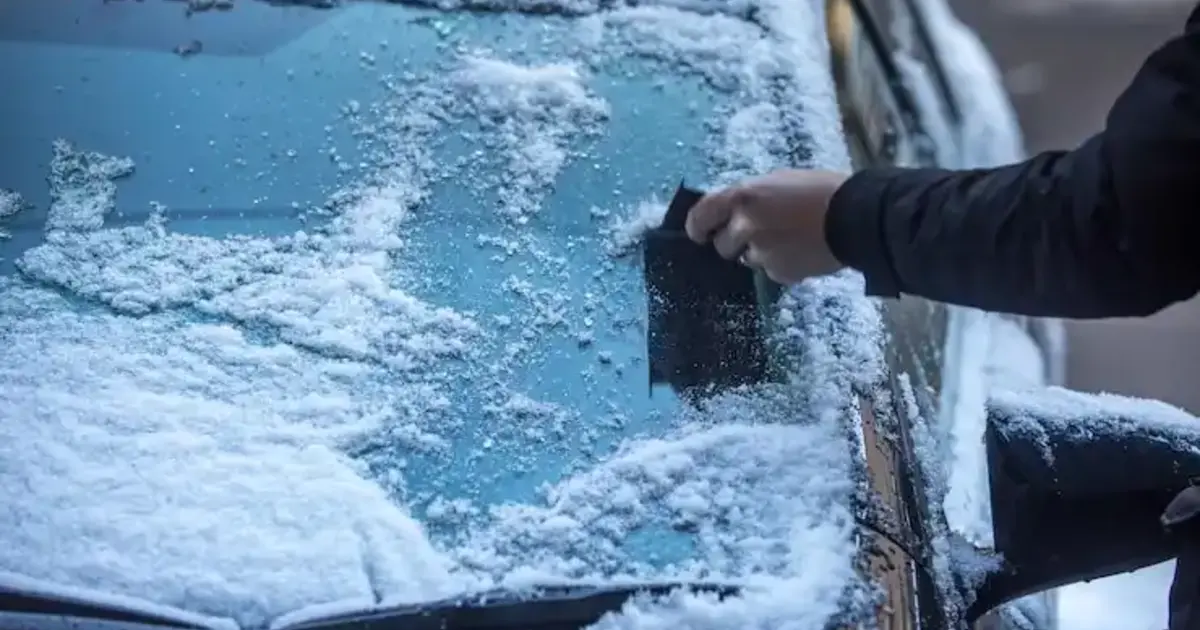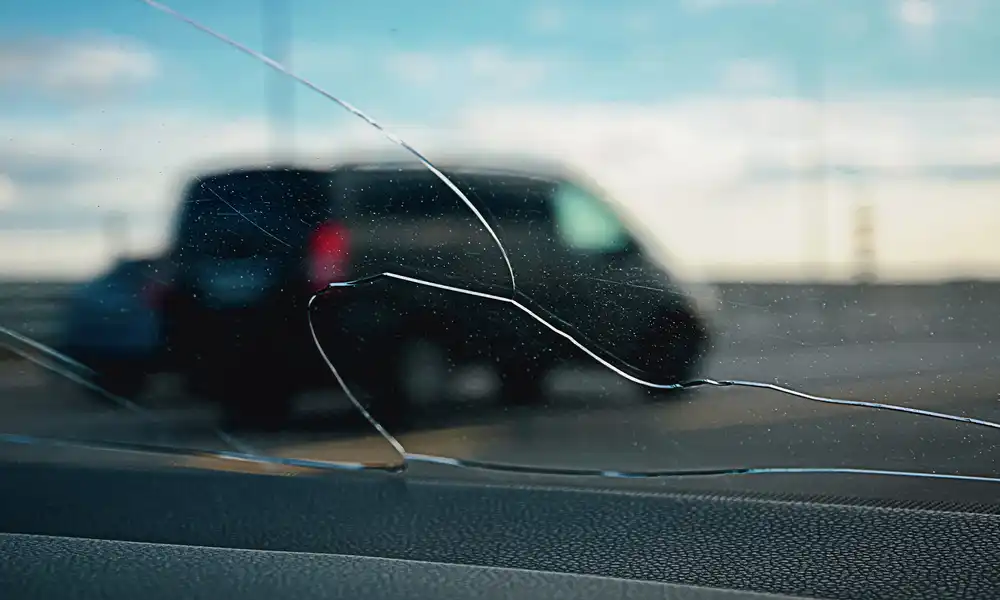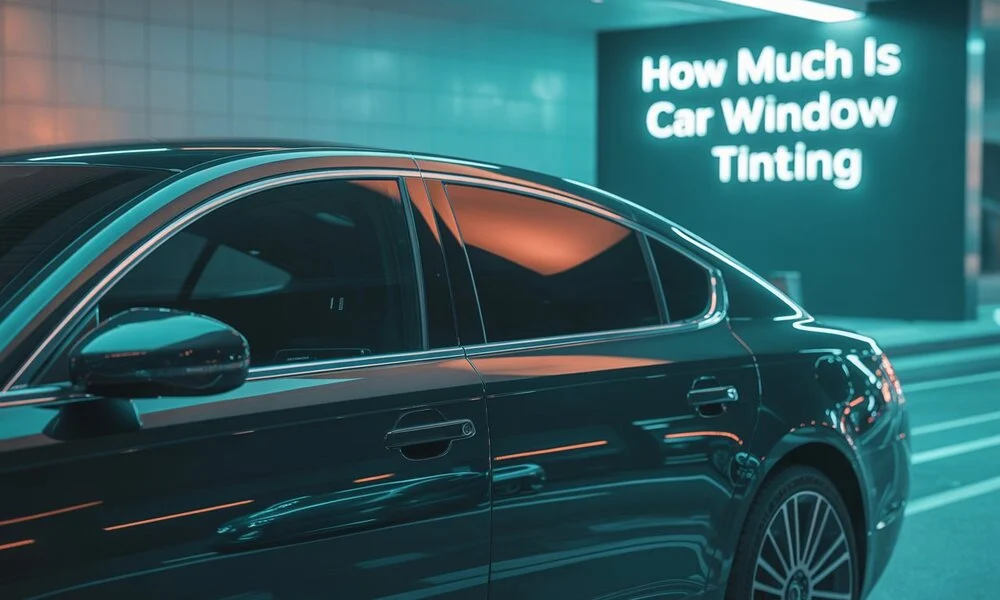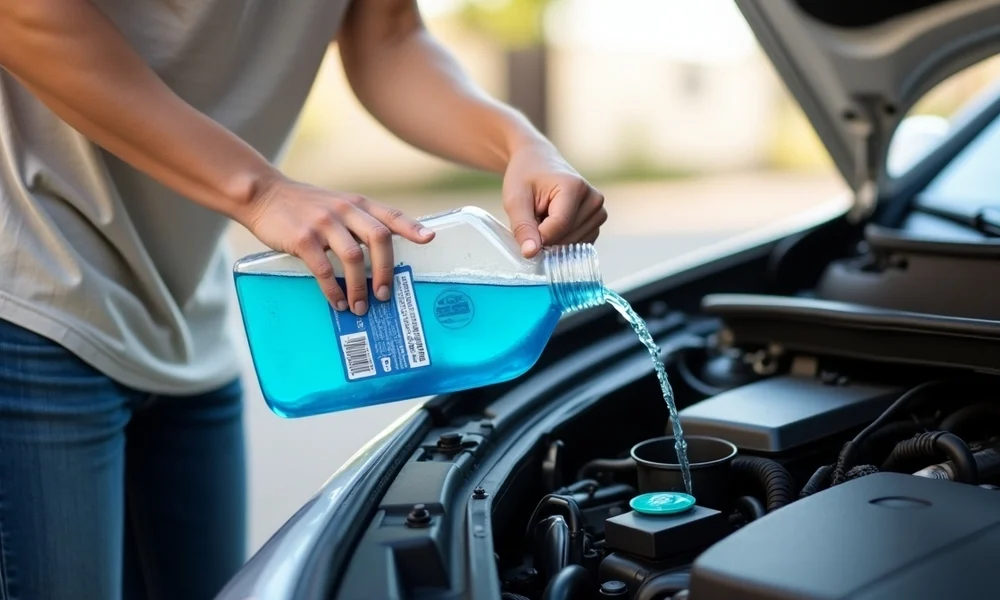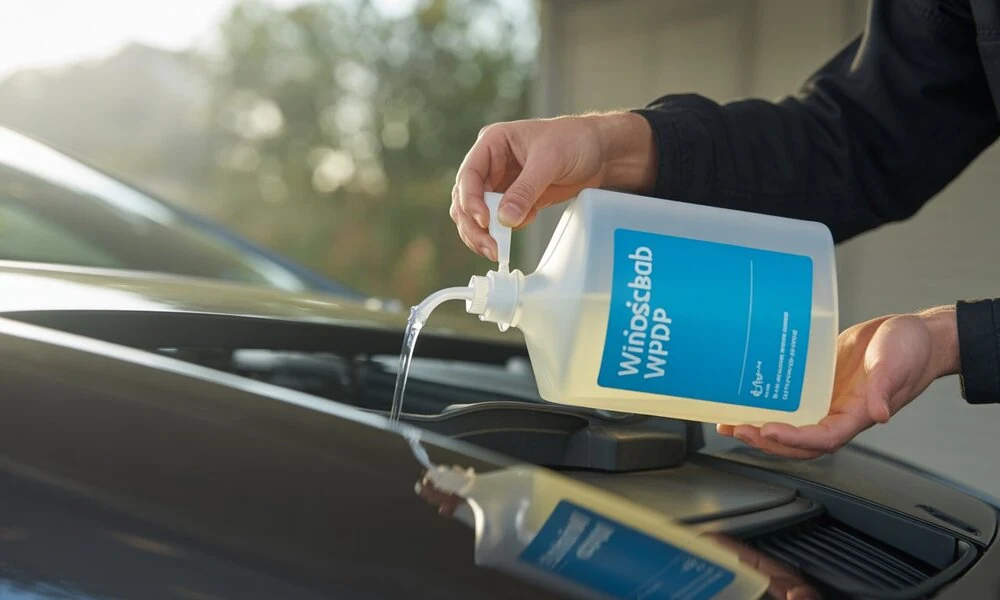Long Windshield Crack Repair: A Comprehensive Guide by Texas Reliable Auto Glass
Long windshield crack repair is our specialty at Texas Reliable Auto Glass. Our expert team is dedicated to providing top-notch services, ensuring your safety on the road. When it comes to preserving the integrity of your vehicle’s windshield, you can count on Texas Reliable Auto Glass. Visit our dedicated page on Long Windshield Crack Repair to learn more about our specialized services and how we can swiftly address any crack or damage. Your safety and clear vision while driving are our utmost priorities, and we’re here to serve you with excellence. Choose Texas Reliable Auto Glass for reliable and efficient windshield repair services.
If you’ve ever found yourself staring at a long windshield crack, you know how frustrating and potentially dangerous it can be. A cracked windshield not only impairs your visibility but also compromises the structural integrity of your vehicle. But fear not, because in this guide, we will walk you through the process of long windshield crack repair. At Texas Reliable Auto Glass, we understand the importance of a safe and clear windshield, and we’re here to help you get back on the road with confidence.
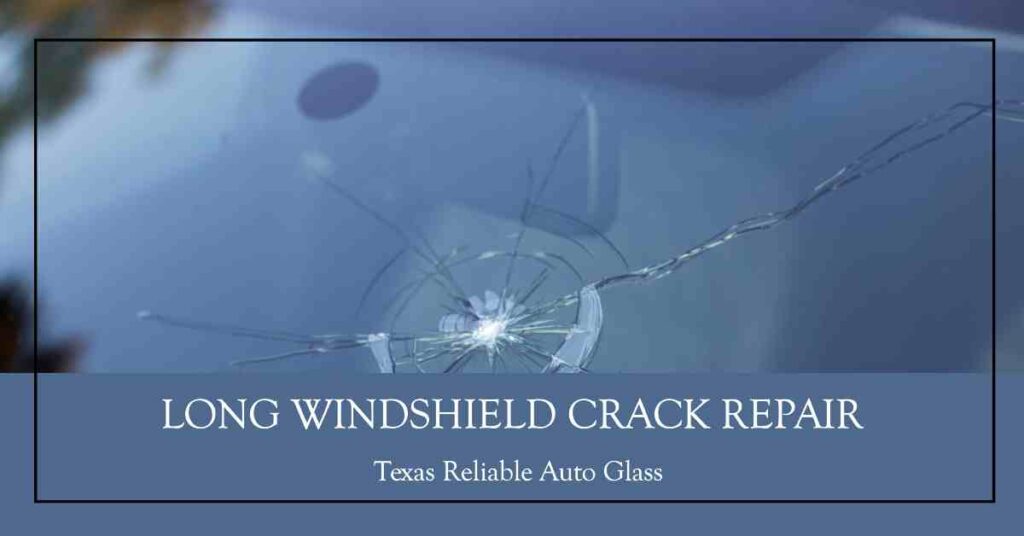
What Are Long Windshield Cracks?
Long windshield cracks, also known as windshield stress cracks, are fissures that extend for more than six inches across the windshield’s surface. These cracks can vary in shape, from straight lines to spiderweb-like patterns, and they typically result from various factors, including:
- Temperature Fluctuations: Extreme temperature changes, such as exposure to hot sunlight followed by sudden cooling, can stress the glass, leading to cracks.
- Impact: A direct impact from flying debris, rocks, or minor accidents can create long cracks on the windshield.
- Structural Weakness: Some vehicles may have inherent weaknesses in their windshield design, making them more prone to cracks under stress.
- Age: As a windshield ages, it becomes more susceptible to cracks and chips due to wear and tear.
Types of Long Windshield Cracks
Long windshield cracks can manifest in several ways:
- Single Crack: A single, long crack that extends across the windshield’s surface without branching.
- Starburst Crack: This type of crack resembles a starburst pattern, with multiple lines radiating from a central point.
- Combination Crack: Combination cracks are a mixture of different crack types, often combining both single and branching cracks.
- Edge Crack: These cracks occur near the edges of the windshield and can spread quickly.
Impact on Safety
Long windshield cracks are not just cosmetic issues; they can pose significant safety risks:
- Impaired Visibility: Cracks in the driver’s line of sight can obstruct vision, making driving hazardous.
- Weakened Structural Integrity: The windshield is an integral part of a vehicle’s structural strength. Cracks can compromise the windshield’s ability to withstand impacts, increasing the risk of injury during accidents.
Repair vs. Replacement
Whether you can repair a long windshield crack or need a replacement depends on several factors:
- Size: Repair is usually possible for cracks less than 12 inches, while longer cracks may require replacement.
- Location: Cracks near the windshield’s edges are more challenging to repair and may necessitate replacement.
- Severity: Extensive or deep cracks may be beyond repair and require replacement for safety reasons.
Importance of Prompt Action
Addressing long windshield cracks promptly is crucial for safety and cost savings. Small cracks can often be repaired, preventing them from spreading and requiring a costly windshield replacement.
Safety First: Precautions before Repair
Safety should always be your top priority when considering windshield crack repair. Before attempting to repair a long windshield crack, here are some crucial precautions to take:
Work in a Well-Ventilated Area
Ensure that you’re working in a space with good ventilation. This is particularly important if you’re using a windshield repair kit that involves the application of resin and curing under UV light. Proper ventilation helps disperse any fumes that may be emitted during the repair process.
Wear Safety Gear
Use the proper safety gear to protect oneself, such as:
- Safety Goggles: Shield your eyes from any glass fragments or debris that may dislodge during the repair process.
- Safety Gloves: Prevent direct contact with chemicals and protect your hands from sharp glass edges.
- Long Sleeves and Pants: Wear clothing that covers your arms and legs to minimize the risk of injury from glass shards.
Keep a Fire Extinguisher Handy
While it’s rare, some windshield repair kits involve the use of flammable materials like alcohol-based solvents. Having a fire extinguisher nearby is a precautionary measure in case of accidents or unexpected fires.Make sure you are familiar with its utilization.
Choose the Right Repair Kit
Select a windshield repair kit that matches the type and size of the crack you’re dealing with. Kits come in various forms, and some are better suited for long cracks than others. Follow the manufacturer’s instructions closely, as different kits may have unique requirements.
Work on a Cool Windshield
Avoid repairing a windshield that is hot to the touch, as the heat can affect the repair process. If your vehicle has been in direct sunlight, wait for the glass to cool down before attempting the repair.
Avoid Distractions
Repairing a windshield requires focus and attention to detail. Ensure you’re working in a distraction-free environment to avoid errors that could compromise the repair’s effectiveness.
Read and Follow Instructions
Before starting the repair, thoroughly read the instructions provided with your repair kit. Following the manufacturer’s guidelines ensures that you use the kit correctly and achieve the best results.
Use Safety Measures for UV Curing
If your repair kit involves curing the resin with UV light, take precautions such as wearing UV-blocking sunglasses and ensuring that the curing process is done safely. Avoid looking directly at the UV light source to protect your eyes.
Dispose of Materials Properly
Dispose of used materials, including broken glass, chemicals, and packaging, in a safe and environmentally friendly manner. Follow local regulations for waste disposal.
Gathering the Necessary Tools and Materials
Before embarking on the journey to repair a long windshield crack, it’s essential to gather all the necessary tools and materials. Having the right equipment at your disposal will ensure a smoother and more effective repair process. This is a list of the equipment and supplies you will require::
Windshield Repair Kit
The heart of your repair project is the windshield repair kit itself. Ensure that the kit is designed for repairing long cracks, as different kits cater to various types of damage. A quality repair kit typically includes:
- Resin: The repair resin is the key component that fills and seals the crack. It should be of high quality and designed for long cracks.
- Curing Film or Tape: This material is used to cover the resin during the curing process, allowing it to harden properly.
- Injector with Plunger: The injector is used to force the resin into the crack. It should have a vacuum function to remove air bubbles.
- Applicator or Bridge: This device holds the injector in place during the repair process and ensures an even distribution of resin.
- Razor Blade or Glass Scraper: You’ll need this tool to clean the crack before applying the resin.
- UV Light or Sunlight: Some kits require UV light for curing, while others can use natural sunlight. Ensure you have the necessary light source as specified in your kit’s instructions.
A clean microfiber cloth is essential for wiping the windshield clean before starting the repair process. It helps remove dust, dirt, and debris from the crack, ensuring better adhesion of the repair resin.
Clear nail polish can be used to seal the crack temporarily if it’s in a precarious state, preventing further damage until you can complete the repair. This is especially helpful if you need to drive to a safer location before beginning the repair.
Texas Reliable Auto Glass is your trusted partner for expert solutions in long windshield crack repair. Our skilled team is dedicated to providing top-notch services, ensuring your safety on the road. When it comes to preserving the integrity of your vehicle’s windshield, you can count on Texas Reliable Auto Glass. Visit our dedicated page on Long Windshield Crack Repair to learn more about our specialized services and how we can swiftly address any crack or damage. Your safety and clear vision while driving are our utmost priorities, and we’re here to serve you with excellence. Choose Texas Reliable Auto Glass for reliable and efficient windshield repair services.
Safety Gloves
Protect your hands by wearing safety gloves, as some of the materials used in windshield repair can be harsh on the skin.
Safety Goggles
Shield your eyes from any glass particles or resin splatters that may occur during the repair process. Protecting your eyes is essential for your safety.
Ventilation
If your repair kit involves the use of solvents or chemicals, ensure you’re working in a well-ventilated area. Adequate ventilation helps disperse fumes and ensures a safer environment.
Fire Extinguisher
Though rare, some repair kits may involve flammable materials. Having a fire extinguisher on hand is a precautionary measure in case of unexpected fires. Ensure you know how to use it.
Instructions
Always have the manufacturer’s instructions from your repair kit readily available. Follow these instructions carefully to ensure that you’re using the kit correctly and maximizing its effectiveness.
Once you’ve gathered all the necessary tools and materials, you’ll be well-prepared to tackle the long windshield crack repair process step by step. Remember to work patiently and diligently to achieve the best results, and if you ever feel unsure, consider seeking professional assistance from experts like Texas Reliable Auto Glass for a safe and reliable repair.
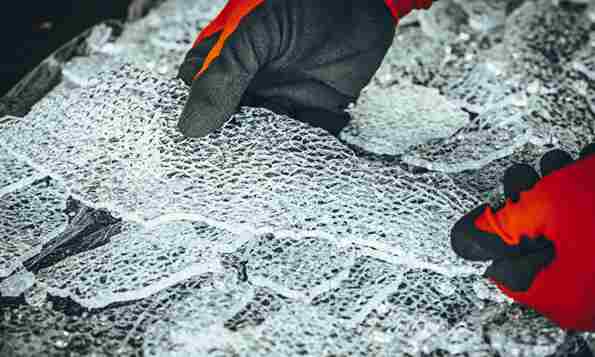
Step-by-Step Repair Process
Step 1: Cleaning the Crack
The first crucial step in the repair process is thoroughly cleaning the crack. Here’s how to do it:
Materials Needed:
- Microfiber cloth
- Razor blade or glass scraper
- Glass cleaner (optional)
Procedure:
- Begin by ensuring that your workspace is well-ventilated and that you’re wearing safety gear, including gloves and safety goggles.
- If there is loose glass or debris around the crack, carefully remove it using the razor blade or glass scraper. Be gentle to avoid widening the crack.
- Use the microfiber cloth to wipe the crack clean. If necessary, you can use a glass cleaner to ensure that the crack is entirely free from dirt, dust, or residue.Before proceeding to the following step, make sure the area is totally dry.
Step 2: Applying the Repair Kit
With the crack cleaned and prepped, it’s time to apply the repair kit. Follow the manufacturer’s instructions closely, as different kits may have specific requirements. Generally, the process involves:
Materials Needed:
- Windshield repair kit
Procedure:
- Position the applicator or bridge from the repair kit over the crack, ensuring that it covers the entire length of the crack.
- Attach the injector to the applicator or bridge and ensure it’s properly secured in place.
- Open the resin vial in your repair kit and place it into the injector’s reservoir.
- Slowly depress the plunger on the injector. Resin will be forced into the crack as a result. Continue to do so until the crack is completely filled, and no air bubbles remain. This may take a few minutes, so be patient.
- Once the crack is filled, leave the injector in place for the recommended curing time as per your kit’s instructions. This allows the resin to flow into all the crevices of the crack.
Step 3: Curing the Resin
Curing the resin is a critical step that ensures the repair is effective and long-lasting. The curing process varies depending on your kit’s specifications:
Materials Needed:
- UV light or sunlight (as specified by your kit)
Procedure:
- If your kit requires UV light for curing, position the UV light source over the repair area according to the manufacturer’s instructions. Be cautious not to expose your eyes to UV light; wear UV-blocking sunglasses if necessary.
- If your kit uses sunlight for curing, place your vehicle in direct sunlight, ensuring that the repair area is exposed to the sun. Follow the recommended curing time provided in your kit’s instructions.
- During the curing process, avoid any movement or disturbance of the repair area to ensure a successful bond between the resin and the glass.
Step 4: Smoothing the Surface
Once the resin has cured, it’s time to smooth the surface to ensure optimal clarity and finish:
Materials Needed:
- Razor blade or glass scraper
- Clear nail polish
Procedure:
- If there is any excess resin on the surface, carefully use the razor blade or glass scraper to remove it. Ensure that the surface of the crack is level and smooth.
- To add an extra layer of protection and improve the crack’s appearance, apply a thin coat of clear nail polish over the repaired area. Allow it to dry completely.
When to Seek Professional Help
While DIY windshield crack repair can be effective for certain situations, there are instances where seeking professional help is the wisest course of action. Here are key scenarios in which you should consider involving experts like Texas Reliable Auto Glass:
Complex or Extensive Cracks
Long windshield cracks, especially those that are complex in shape or extend over a large area, may require the expertise of a professional. Repairing such cracks can be challenging, and an improper repair could lead to further damage or compromise the structural integrity of the windshield.
Cracks Near the Edge
Cracks that are located near the edge of the windshield can be particularly tricky to repair. They are more likely to spread and can weaken the windshield’s attachment to the vehicle’s frame. Professional technicians have the experience and tools to handle these situations safely.
Driver’s Line of Sight
Cracks that obstruct the driver’s line of sight are a significant safety concern. Attempting a DIY repair in such cases could lead to a flawed repair job that still affects visibility. Professional technicians can assess the damage and determine whether a repair is viable or if a windshield replacement is necessary.
Lack of Experience
If you have little to no experience with windshield crack repair, it’s easy to make mistakes during the process. Properly applying the repair kit and ensuring that the resin cures correctly require a certain level of skill. Professional technicians are trained to perform these tasks with precision.
Inadequate Equipment
Professional auto glass repair shops are equipped with specialized tools and materials that may not be available in DIY kits. These tools are designed to achieve optimal results in various repair scenarios.
Doubt about DIY Success
If you have reservations about your ability to perform a successful DIY repair or if you’re uncertain about the extent of the damage, it’s best to consult a professional. They can assess the situation, provide expert advice, and recommend the appropriate course of action.
Insurance Coverage
Some insurance policies cover windshield repairs, and in many cases, the cost of professional repair may be covered. Consulting a professional can help you navigate insurance claims and ensure that you receive the benefits you’re entitled to.
Future Safety Concerns
A professionally repaired windshield is more likely to maintain its structural integrity and protect you in the event of an accident. If you have any concerns about your safety on the road, it’s best to trust the expertise of professionals who can ensure your windshield is in optimal condition.
Preventing Windshield Cracks
Preventing windshield cracks is essential for maintaining your safety on the road and avoiding costly repairs or replacements. Here are some tips to help you prevent windshield cracks:
Safe Driving Practices
One of the most effective ways to prevent windshield cracks is by practicing safe driving habits:
- Maintain a Safe Following Distance: Keep a safe distance from the vehicle in front of you to reduce the risk of debris kicked up by other vehicles hitting your windshield.
- Avoid Tailgating: Tailgating increases the chances of rocks and debris hitting your windshield. Stay a reasonable distance behind other vehicles.
- Reduce Speed in Construction Zones: Slow down in construction zones or areas with loose gravel, as these environments are more likely to produce debris that can damage your windshield.
Repair Minor Damage Promptly
If you notice any small chips or cracks on your windshield, it’s crucial to address them promptly. Small damages can quickly escalate into larger cracks if left untreated. Most small chips can be repaired, which is more cost-effective than replacing the entire windshield.
Avoid Extreme Temperature Changes
The stress caused by abrupt temperature changes might cause cracks in the glass. Avoid exposing your windshield to extreme temperature variations whenever possible. For example:
- Avoid Hot Water in Winter: Do not pour hot water on an icy windshield to melt the ice; this can cause thermal stress and cracks.
- Use Sunshades: Place a sunshade in your vehicle’s windshield on hot, sunny days to reduce heat buildup.
Proper Maintenance
Regular vehicle maintenance can help prevent windshield cracks:
- Check Wiper Blades: Ensure your wiper blades are in good condition. Old or damaged wiper blades can scratch the windshield, making it more susceptible to cracks.
- Replace Windshield Fluid: Use windshield washer fluid that won’t freeze in cold weather to prevent ice buildup on the windshield.
Avoid Road Hazards
Be mindful of road hazards and take precautions:
- Drive Around Debris: If you spot debris on the road, try to safely maneuver around it rather than driving over it.
- Avoid Construction Zones: When possible, choose alternate routes to avoid areas with extensive roadwork or construction, as these areas tend to have more debris.
Be Cautious During Severe Weather
During severe weather conditions, such as hailstorms or heavy winds, exercise caution:
- Find Shelter: If a severe storm is approaching, try to find shelter or park your vehicle in a protected area to minimize the risk of hail or wind-blown debris.
Replace Worn Windshield Wipers
Worn-out wiper blades can leave streaks and reduce visibility, which may lead to accidents or increased vulnerability to windshield damage. Replace them regularly to ensure they function correctly.
Maintain a Safe Distance from Large Trucks
Large trucks can kick up debris more easily than smaller vehicles. Maintaining a safe distance when driving behind or passing large trucks can reduce the chances of debris hitting your windshield.
Conclusion
Maintaining the integrity of your vehicle’s windshield is not only essential for your safety but also for your wallet. Long windshield cracks can compromise your visibility and the structural strength of your car, making prevention and timely repair critical.
However, if you ever find yourself facing a long windshield crack, it’s vital to assess the situation carefully. While DIY repairs are feasible for minor damage, more complex cracks near the driver’s line of sight or close to the edge of the windshield may require professional attention from experts like Texas Reliable Auto Glass. Safety should always be your top priority, and professional technicians can ensure the best possible outcome.
At Texas Reliable Auto Glass, we specialize in providing top-notch solutions for long windshield crack repair. Our experienced team is dedicated to ensuring your safety and clear visibility on the road. When you choose us for your auto glass needs, you’re choosing a company that cares about your well-being. Contact us today to learn more about our services and how we can assist you. Visit our About Us page to discover our commitment to excellence and customer satisfaction. Your safety is our priority, and we’re here to keep you driving with confidence.
FAQs
Can I drive with a cracked windshield?
While it is generally possible to drive with a cracked windshield, it is not advisable, especially if the crack obstructs your line of sight or if it compromises the structural integrity of the windshield. Driving with a severely cracked windshield can pose safety risks and may lead to legal issues depending on your location. It’s best to assess the severity of the crack and, if in doubt, consult a professional for an evaluation.
How much does windshield crack repair cost?
The cost of windshield crack repair can vary depending on several factors, including the size and type of the crack, the location, and whether you opt for a professional repair or a DIY kit. DIY kits are generally more affordable, ranging from $10 to $30. Professional repairs can cost between $50 and $150 or more, depending on the complexity of the repair. Keep in mind that some insurance policies may cover the cost of repairs, so it’s advisable to check with your insurance provider.
Is long crack repair covered by insurance?
Many insurance policies cover windshield repairs, including long crack repairs, as they are considered a preventive measure to avoid the need for a costly windshield replacement. However, coverage may vary depending on your insurance provider and policy. It’s essential to review your insurance policy or contact your insurer to determine whether long crack repair is covered and what your deductible may be.
How long does the repair process take?
The duration of the repair process for a long windshield crack can vary depending on several factors, including the type of repair kit used and the curing method. DIY repairs typically take an hour or two to complete, while professional repairs may take longer, depending on the complexity of the crack. Some repairs may require additional time for curing, whether through UV light or natural sunlight. Be sure to follow the specific instructions provided with your chosen repair kit or consult with a professional for a more accurate estimate.
Can I repair a cracked windshield myself?
Yes, it is possible to repair a cracked windshield yourself, especially if the crack is small and meets certain criteria. DIY repair kits are readily available and come with step-by-step instructions. However, it’s essential to assess the severity and type of the crack before attempting a DIY repair. Complex or extensive cracks, those near the driver’s line of sight, or those close to the windshield’s edge are best handled by professionals to ensure safety and effectiveness. If you choose to DIY, follow the instructions closely and work with care to achieve the best results.


